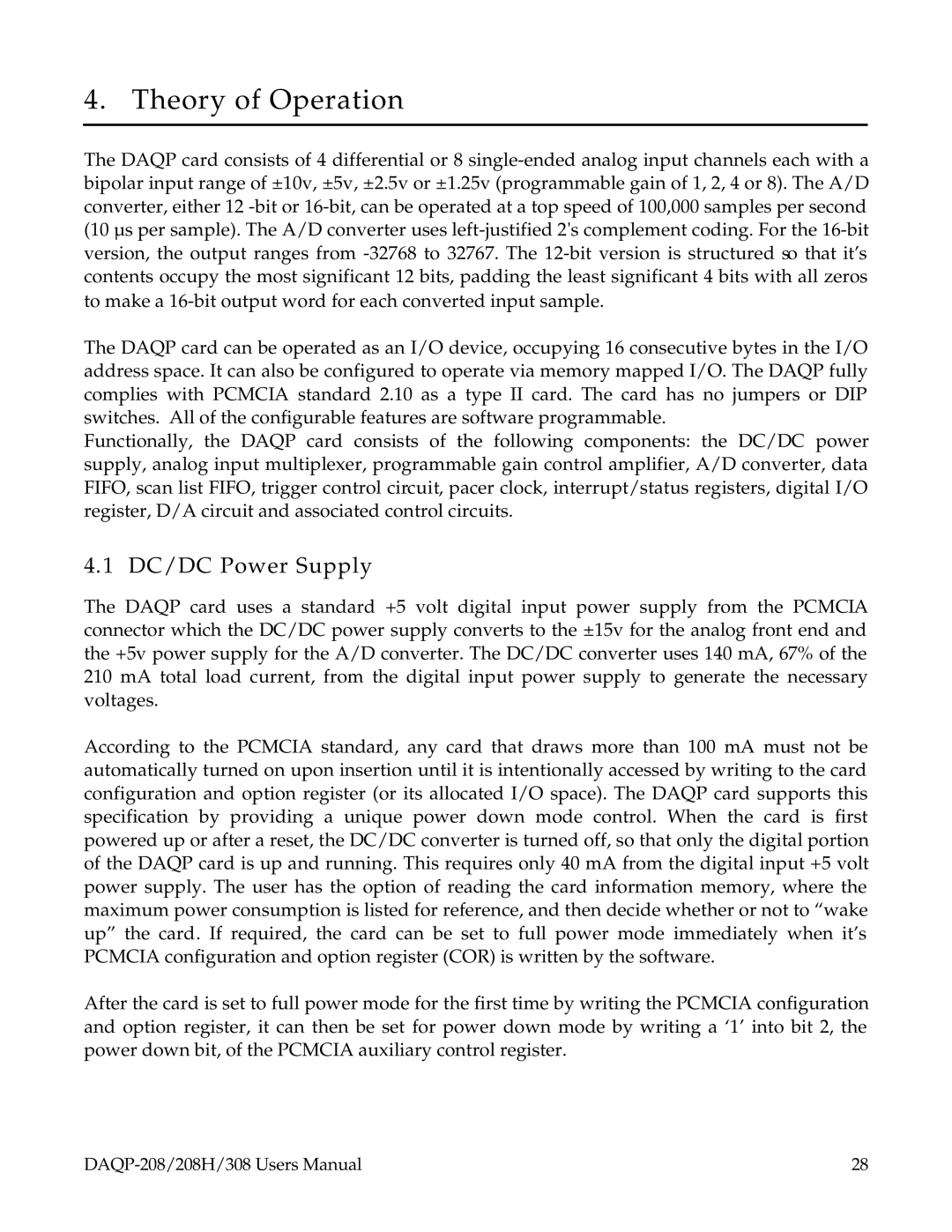4. Theory of Operation
The DAQP card consists of 4 differential or 8
The DAQP card can be operated as an I/O device, occupying 16 consecutive bytes in the I/O address space. It can also be configured to operate via memory mapped I/O. The DAQP fully complies with PCMCIA standard 2.10 as a type II card. The card has no jumpers or DIP switches. All of the configurable features are software programmable.
Functionally, the DAQP card consists of the following components: the DC/DC power supply, analog input multiplexer, programmable gain control amplifier, A/D converter, data FIFO, scan list FIFO, trigger control circuit, pacer clock, interrupt/status registers, digital I/O register, D/A circuit and associated control circuits.
4.1 DC/DC Power Supply
The DAQP card uses a standard +5 volt digital input power supply from the PCMCIA connector which the DC/DC power supply converts to the ±15v for the analog front end and the +5v power supply for the A/D converter. The DC/DC converter uses 140 mA, 67% of the 210 mA total load current, from the digital input power supply to generate the necessary voltages.
According to the PCMCIA standard, any card that draws more than 100 mA must not be automatically turned on upon insertion until it is intentionally accessed by writing to the card configuration and option register (or its allocated I/O space). The DAQP card supports this specification by providing a unique power down mode control. When the card is first powered up or after a reset, the DC/DC converter is turned off, so that only the digital portion of the DAQP card is up and running. This requires only 40 mA from the digital input +5 volt power supply. The user has the option of reading the card information memory, where the maximum power consumption is listed for reference, and then decide whether or not to “wake up” the card. If required, the card can be set to full power mode immediately when it’s PCMCIA configuration and option register (COR) is written by the software.
After the card is set to full power mode for the first time by writing the PCMCIA configuration and option register, it can then be set for power down mode by writing a ‘1’ into bit 2, the power down bit, of the PCMCIA auxiliary control register.
28 |
